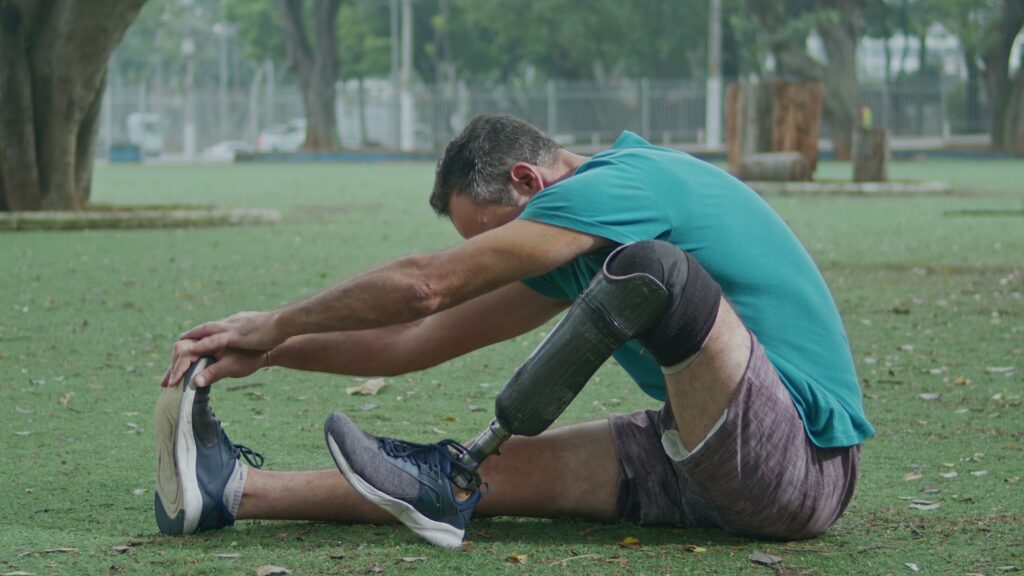01

The first step is to evaluate the limb, where your prosthetist will ask you questions about your goals, work, and hobbies. This helps identify the best components for your prosthesis and establish a prosthetic treatment plan. Afterward, we will take measurements and a cast of your limb to make the socket.
02

During your second visit, you will be fitted with a test socket to ensure that the finished product will have the correct fit, height, and alignment.
03

In your final appointment, you will be fitted with your custom socket along with the needed components. Your practitioner will educate you on the proper care of the device. We will schedule regular follow-up appointments with you for necessary modifications and adjustments.
The socket is the part of your prosthesis that encases your residual limb. Different socket designs are tailored to each amputation level, with each one custom-made to fit the patient’s limb.
Liners are worn directly on the skin, acting as a protective layer between the residual limb and the prosthetic socket.
How the socket attaches to your limb. Your prosthetist will collaborate with you to choose the best option, considering your individual needs as well as the location, shape, and condition of your residual limb.
Most common suspensions are:
If your residual limb size fluctuates, prosthetic socks can be added over your liner to maintain a secure fit with your socket. These socks are available in various sizes and thicknesses(ply).
Please be sure to follow these directions regarding daily hygiene and donning/doffing the socket and liner exactly. This will ensure longevity of the liner and maintain viability of your residual limb.
The first day you wear your prosthesis remove it every 1to 1 ½ Hours and examine your residual limb carefully. If you see any red spots, which disappear within 5 to 10 minutes, do not worry. This is normal since your skin is simply reacting to new pressure and weight bearing spots. However, if the red spots do not disappear within 5 to 10 minutes please call my office immediately. We will schedule a prompt appointment to relieve this area, so it does not turn into a blister. This is especially important if you are diabetic and/or have vascular disease.
If the shuttle lock fails to release, do not panic. It may only have trapped a loose thread from your prosthetic sock, which can be worked out with a bit of patience and gentle pulling. If the button is hard to push, stand up and put your weight on the prosthesis. Push down hard and then sit down. Do not pull the insert out before pressing in the lock button.
Do not wear your prosthesis to bed. Take your prosthesis off before napping or retiring for the night and put it on when you get up in the morning.
Be prepared to change the amount and/or the ply of your prosthetic socks as the volume of your residual limb changes. This may occur once in a while or a number of times in one day and is normal. You will need to add or take off socks as your residual limb swells or contracts.
You will lose fit in your prosthetic socket as your residual limb changes. This is normal, we will be able to adjust your prosthesis to accommodate these anatomical changes.
Notify us immediately in the event of a hard fall or if your weight and/or activity level changes so that we can inspect your prosthesis for hidden damage and to prevent the possibility of further damage to the prosthesis and, and most important, injury to you.
DO NOT ATTEMPT TO ADJUST OR CHANGE YOUR PROSTHESIS!!!!!
The components have been carefully chosen, assembled, adjusted and secured according to the manufacturer’s exact specifications and should under no circumstances be changed by anyone except a certified prosthetist. Please call us as soon as you notice a problem and we will gladly schedule an immediate appointment to adjust your prosthesis.

We accept ALL commercial and Medicare insurance. Call our office to determine your coverage. Here are some our in network plans:
